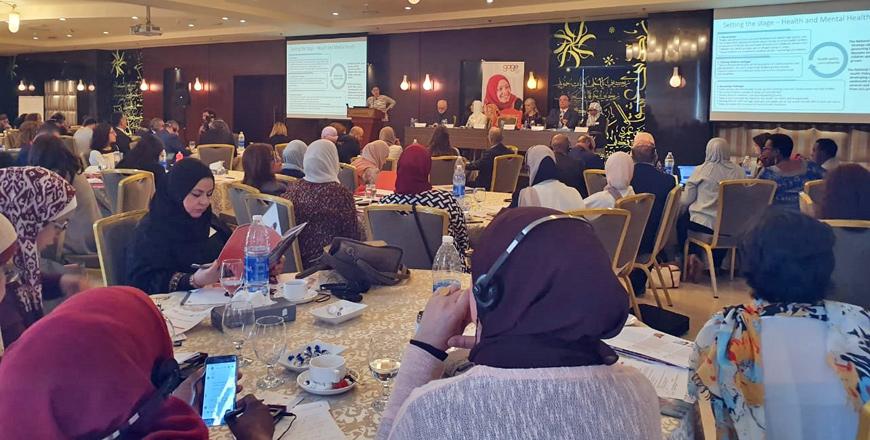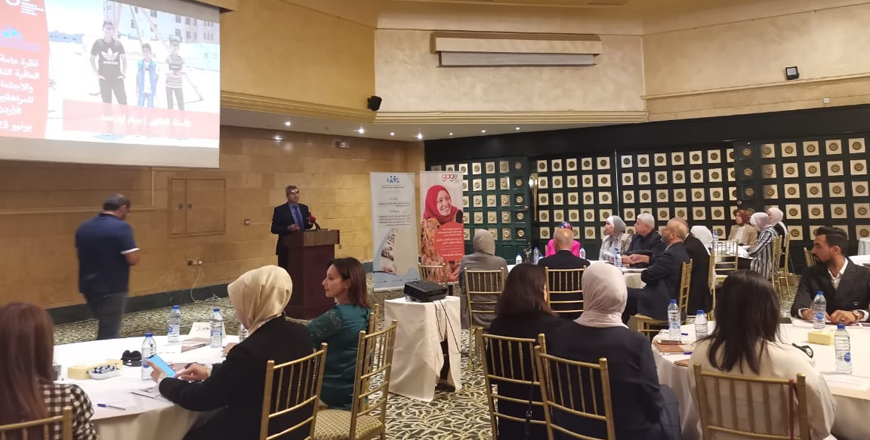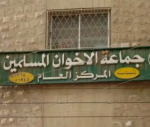You are here
Research seeks to ‘better understand’ youth experiences, expedite social change
By JT - Oct 20,2019 - Last updated at Oct 20,2019

The GAGE findings will be launched in a series of dissemination events this week, attended by key government institutions, civil society organisations and international agencies (Photo courtesy of GAGE)
AMMAN — Exploring adolescent experiences amongst the most vulnerable children and adolescents in Jordan from refugee camps, informal tented settlements and host communities is the focus of a project run by the Gender and Adolescence: Global Evidence Programme (GAGE) in partnership with UNICEF Jordan.
The GAGE Jordan team, including the Information and Research Centre - King Hussein Foundation (IRCKHF) and Mindset, together with international research advisers, conducted in-depth research among 4,000 adolescents — including vulnerable Jordanians, Palestinian and Syrian refugees and their caregivers, according to an IRCKHF statement on Sunday.
The aim of the research is to better understand the experiences and perspectives of the youth in six key domains: Education and learning, health and nutrition, freedom from age- and gender-based violence including child marriage, psychosocial well-being, voice and agency and economic empowerment and social protection.
The GAGE findings will be launched in a series of dissemination events this week, attended by key government institutions, civil society organisations and international agencies, the statement said.
The findings will demonstrate not only differences between the experiences of adolescent girls and boys at different points in the second decade of life (10-19 years), but also provide insights into differences between young people from different nationalities, those in rural and urban communities and in camps and host communities, according to the statement.
“Capitalising on adolescence to fast-track young people’s development and promote broader social change is increasingly recognised as a not-to-be-missed opportunity for governments and practitioners. But there is still much more; we need to learn about what sorts of programmes and services are most effective for adolescent girls and boys. Long-term studies like GAGE provide essential evidence to help inform decisions about programme design, and allow us to assess impacts of interventions over time,” Director of the GAGE Programme Nicola Jones was quoted in the statement as saying.
The research finds that there is significant diversity in adolescent experiences: Refugee adolescents tend to be the most vulnerable, though the risks that girls and boys face can be quite different.
The research indicates that adolescent and parental educational aspirations are high, with parental aspirations often mirroring those of their children. Of those surveyed, 82 per cent of younger survey respondents indicated that they wished to complete at least some secondary school and 70 per cent reported wanting to attend university. Nearly three-quarters of a sub-sample of adolescent participants indicated that they aspired to have professional careers, but few had concrete knowledge or plans as to how they could realise these goals.
The survey also found that 49 per cent of participants admitted to having experienced violence at home, and 41 per cent at school, the statement said. Adolescents with disabilities are 32 per cent more likely to be have been bullied in the past year than those without disabilities (53 per cent versus 40 per cent).
More than two-thirds (70 per cent) of adolescents in the sample were able to identify a role model who inspires them, though older adolescents (especially older boys) were less likely to be able to do so than younger adolescents.
The research saw that early adolescence (10-14 years) in particular marks a “watershed point for intervention” in Jordan, the statement said.
It calls for the government and partners to expand and refocus efforts on this “window of opportunity” to ensure that all young people — including the most vulnerable — thrive. Along this vein, the research makes a series of recommendations as to how the Government of Jordan and its national and international development partners can better align its commitments to young people under the globally agreed Sustainable Development Goals.
Related Articles
AMMAN — Commitment to better lives, family support and financial motivation are among the factors that have shaped the economic empowerment
AMMAN — The Gender and Adolescence: Global Evidence Programme (GAGE), an international longitudinal research programme funded by UK aid and
AMMAN — Adolescents living in Jordan need stepped-up psychosocial support — both formally and informally — if they are to thrive, according


















